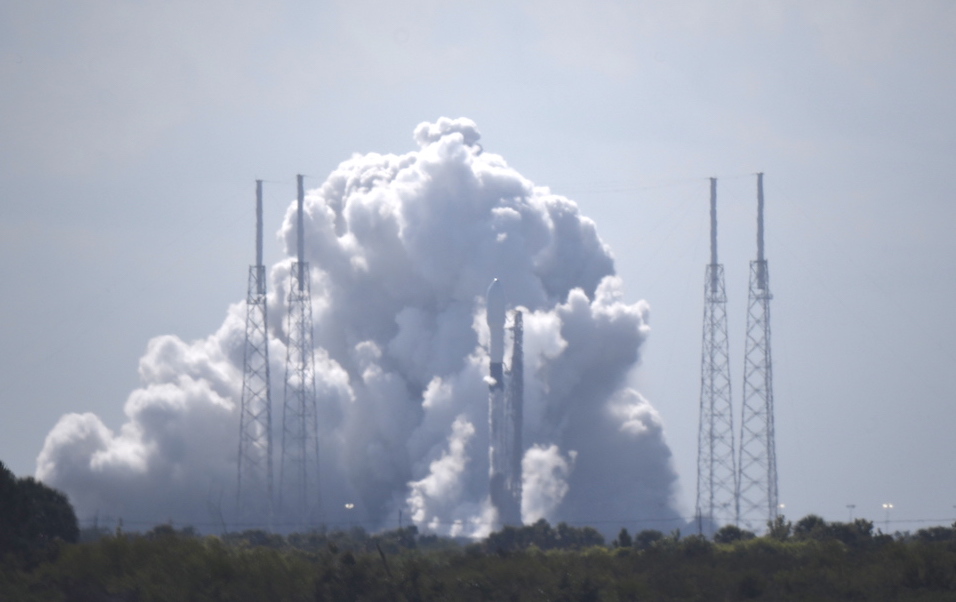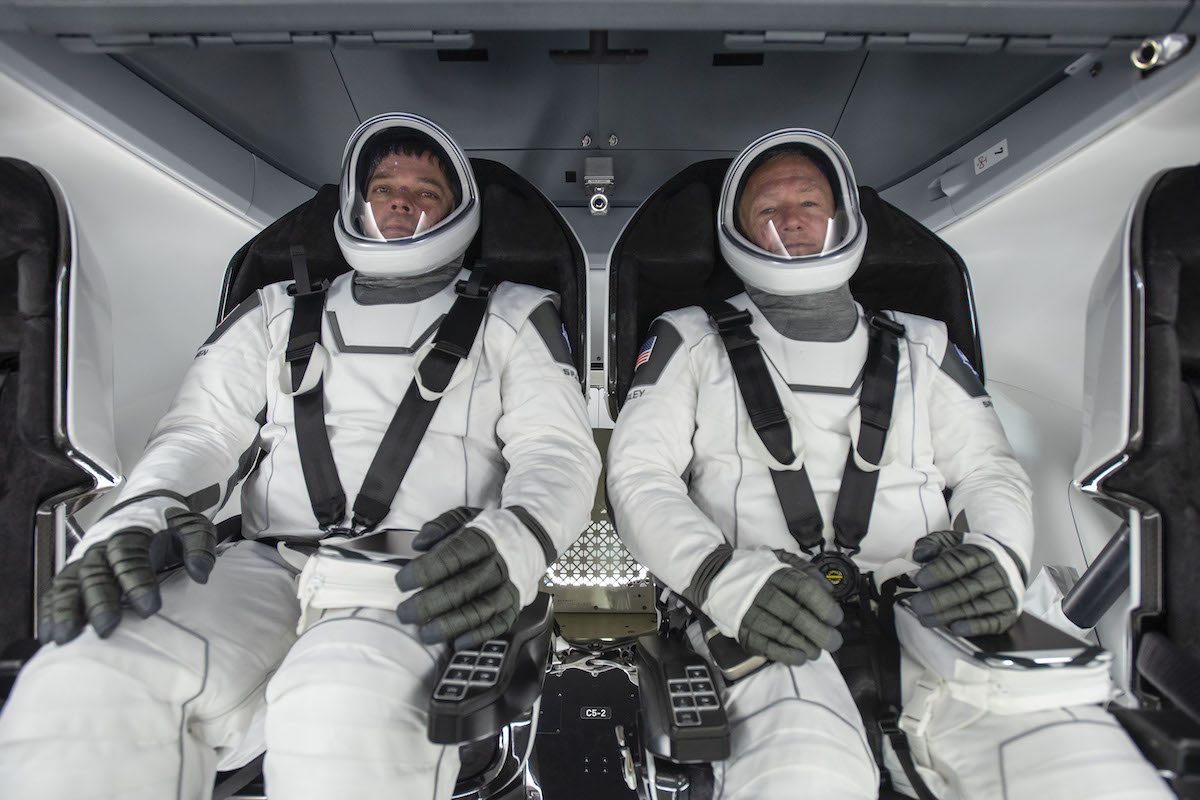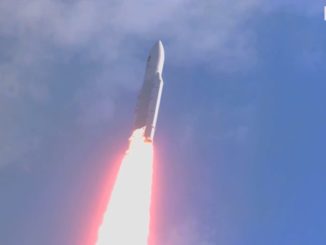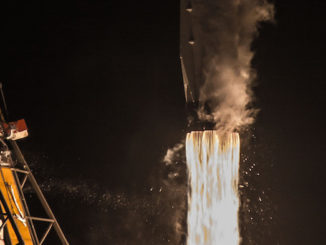
SpaceX fired up a Falcon 9 rocket at Cape Canaveral Wednesday in a pre-flight test for a Starlink satellite launch Sunday, moving closer to the company’s final mission before sending two NASA astronauts into orbit for the first time May 27.
The test-firing occurred at 10 a.m. EDT (1400 GMT) Wednesday on pad 40 at Cape Canaveral Air Force Station. The Falcon 9’s nine Merlin main engines throttled up to full power, generating 1.7 million pounds of thrust while hold-down restraints kept the 229-foot-tall (70-meter) rocket firmly on the ground.
The engines burned for several seconds, sending a cloud of steam and exhaust into the sky over the seaside launch pad.
The static fire test is a customary part of all SpaceX launch campaigns, giving engineers a chance to practice countdown procedures and load the Falcon 9 with super-chilled, densified kerosene and liquid oxygen propellants to verify the rocket’s readiness for flight.
After a data review, SpaceX will press ahead with final preparations for launch of around 60 more satellites for its Starlink Internet network, joining more than 400 other Starlink craft launched since May 2019.
SpaceX aims to launch around 1,000 more Starlink satellites later this year and next year to begin offering worldwide Internet service. Initial beta testing of the Starlink network could begin later this year, beginning in higher latitude regions like Canada and the northern United States.
Thousands more Starlink spacecraft could launch in the coming years to meet global demand, according to SpaceX.
A new sunshade to reduce the brightness of the Starlink satellites will debut on this weekend’s launch. The umbrella-like visor will block sunlight from reaching the shiniest parts of the flat-panel spacecraft, making them less visible from the ground.
Scientists have raised concerns that thousands of Starlink satellites — as envisioned by SpaceX — could impact astronomical observations through ground-based telescopes. So far, SpaceX has answered with an experimental darkening treatment that offered some reduction in visibility, and the company says it is changing the orientation of the Starlink satellites during the period shortly after launch to turn their solar panels away from the sun.
The sunshade should provide a more significant dimming effect, SpaceX says.
SpaceX confirmed a successful outcome to Wednesday’s static fire test in a tweet. The Falcon 9 launch is scheduled for 3:53 a.m. EDT (0753 GMT) Sunday from pad 40, less than 24 hours after a United Launch Alliance Atlas 5 rocket is set for liftoff from neighboring pad 41 with the U.S. Air Force’s X-37B spaceplane.
Officials with the 45th Space Wing, which manages the range for all launches from Cape Canaveral, said the Falcon 9’s approval for flight Sunday hinges on an on-time launch of the Atlas 5 rocket Saturday. If the Atlas 5 launch is scrubbed Saturday and ULA tries again Sunday, the Falcon 9 launch for the Starlink network would be delayed to early Monday on the first-come, first-served range schedule.
SpaceX said Wednesday that the first stage assigned to this weekend’s launch is a veteran of four previous flights, landing on a SpaceX drone ship after each mission. The booster first flew from Cape Canaveral in September 2018 with a Telesat communications satellite, then launched again from Vandenberg Air Force Base in California in January 2019 with 10 Iridium voice and data relay payloads.
Its third flight occurred last May on the first dedicated Falcon 9 launch for the Starlink program. Most recently, the booster launched Jan. 6 from Cape Canaveral.
The first stage will again attempt a landing on SpaceX’s drone ship northeast of Cape Canaveral. If it lands, it will mark the first time SpaceX has recovered a Falcon 9 first stage for a fifth time.

SpaceX ground crews are readying a brand new Falcon 9 rocket for the Demo-2 launch from pad 39A.
The next launch from Cape Canaveral after this weekend’s flights is the Crew Dragon spacecraft’s Demo-2 mission, which will carry NASA astronauts Doug Hurley and Bob Behnken to the International Space Station.
Assuming this weekend’s Starlink mission goes according to plan, the Crew Dragon launch is set for 4:33 p.m. EDT (2033 GMT) May 27 from pad 39A at NASA’s Kennedy Space Center, just a few miles north of pad 40.
It will mark the first time astronauts have rocketed into orbit from U.S. soil since the last launch of the space shuttle on July 8, 2011.
Email the author.
Follow Stephen Clark on Twitter: @StephenClark1.



